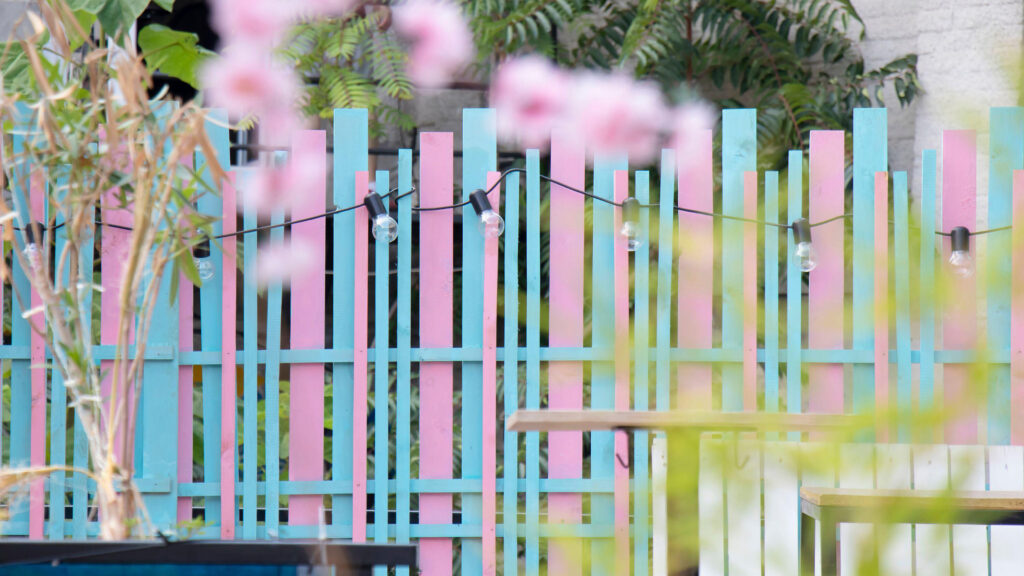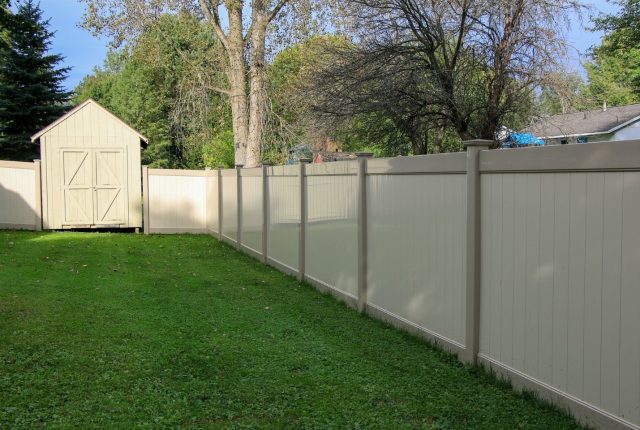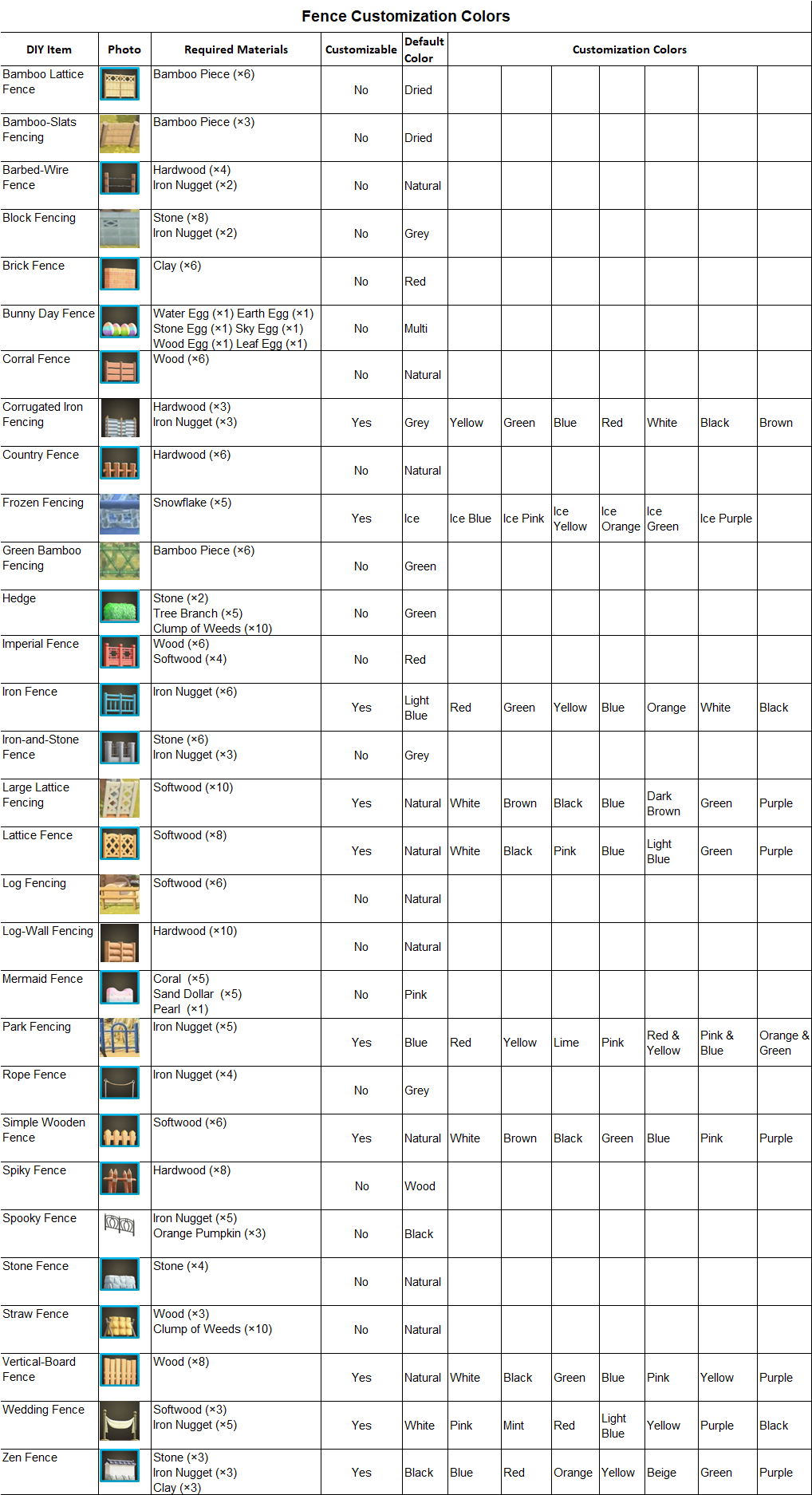Looking to customize your fence? Whether you’re looking to add a pop of color or incorporate unique patterns, customizing your fence can transform the entire aesthetic of your property. In this article, we’ll explore the world of fence customization, from different color options to various patterns that can be incorporated into your fence design. We’ll also delve into the importance of choosing the right fence type, size, and shape to suit your specific needs. Whether you’re looking to enhance privacy, increase security, or simply add a decorative element to your property, customizing your fence is a fun and creative way to personalize your outdoor space. So, let’s dive in and explore the endless possibilities for customizing your fence!

1. Choosing the Right Color
Choosing the right color for your fence is an important decision as it can greatly impact the overall appearance and aesthetic appeal of your property. When it comes to selecting a color for your fence, there are a few factors to consider:
1.1 Factors to Consider
-
Architectural Style: Take into account the architectural style of your home and surrounding structures. Choose a fence color that complements the overall aesthetic and blends well with the existing color palette.
-
Curb Appeal: Consider the impact you want your fence to have on the curb appeal of your property. If you want your fence to stand out and make a statement, opt for a bold color. On the other hand, if you prefer a more subtle and cohesive look, choose a color that is in harmony with the surrounding elements.
-
Maintenance: Different fence colors may require different levels of maintenance. Darker colors tend to show dirt and require more frequent cleaning, while lighter colors may be more forgiving in terms of maintenance.
-
Climate and Sun Exposure: Take into account the climate and sun exposure in your area. Some colors may fade or discolor under intense sun exposure, while others may be more resistant to fading. Consider the long-term effects of sun exposure on your chosen color.
1.2 Popular Fence Colors
When it comes to popular fence colors, there are a few options that are widely favored:
-
Neutral Tones: Neutral colors such as white, beige, and gray are classic choices that never go out of style. They offer a timeless and versatile look that can complement a variety of architectural styles.
-
Earth Tones: Earthy colors like brown and tan blend well with natural surroundings and harmonize with landscapes. They give a warm and inviting feel to your property.
-
Black: Black fences have gained popularity in recent years for their sleek and modern appearance. They can create a bold contrast against greenery or act as a backdrop for vibrant plants and flowers.
-
Stained Wood: For wooden fences, staining the wood in a natural or semi-transparent color allows the natural beauty of the wood grain to shine through. This option provides a rustic and organic look.
2. Enhancing Aesthetic Appeal with Patterns
In addition to color, adding patterns to your fence can further enhance its aesthetic appeal. Whether you choose to go with a simple lattice design or a more intricate pattern, here are some benefits to consider:
2.1 Benefits of Adding Patterns
-
Visual Interest: Adding patterns to your fence can create visual interest and make it more eye-catching. A unique pattern can make your fence stand out and become a focal point of your property.
-
Privacy Enhancement: Patterns, such as lattice or staggered boards, can be strategically placed to provide privacy while still allowing airflow and natural light to pass through. They offer a balance between privacy and openness.
-
Wind Reduction: Certain patterns, like the windbreak pattern, can help reduce the wind’s force passing through the fence. This can be particularly useful in areas with strong winds.
-
Customized Style: Different patterns can evoke different styles and themes. You can choose patterns that match the architectural style of your home or express your personal taste and preferences.
2.2 Popular Fence Patterns
Here are some popular fence patterns that can elevate the look of your fence:
-
Lattice: Lattice patterns consist of crisscrossed strips of wood, vinyl, or metal, forming a grid-like design. Lattice patterns add an element of sophistication and can be used for both privacy and decorative purposes.
-
Chevron: Chevron patterns create a V-shaped zigzag design and can bring a touch of modernity to your fence. This pattern works well with both wooden and metal fences.
-
Herringbone: Herringbone patterns consist of diagonal slats that are alternately angled to create a distinctive “V” or “X” pattern. This pattern adds a stylish and decorative touch to your fence.
-
Basket Weave: Basket weave patterns consist of alternating vertical and horizontal slats, creating a woven design reminiscent of a basket. This pattern adds texture and visual interest to your fence.
By incorporating patterns into your fence design, you can personalize it to reflect your unique style and enhance the overall aesthetic appeal of your property.

3. Customizing Wooden Fences
Wooden fences offer a warm and natural look to your property, and they can be customized in various ways to make them truly unique. Here are some options for customizing wooden fences:
3.1 Staining and Painting Options
One of the most common ways to customize a wooden fence is through staining and painting. This allows you to add color to the wood or highlight its natural beauty. Some options to consider include:
-
Natural Stain: Applying a clear or natural stain to the wood enhances its natural color and grain while providing some protection against the elements.
-
Semi-Transparent Stain: This type of stain adds color to the wood while still allowing the grain to show through. It provides more protection against UV rays and moisture compared to a natural stain.
-
Solid Color Stain: If you want to completely change the color of your wooden fence, a solid color stain can achieve that. It provides good coverage and protection, but it may obscure the wood grain.
-
Paint: Painting your wooden fence gives you the most color options and allows you to match it with the rest of your property. However, keep in mind that paint may require more maintenance over time.
When choosing a stain or paint color for your wooden fence, consider the same factors mentioned in the “Choosing the Right Color” section, such as architectural style, curb appeal, maintenance, and climate.
3.2 Custom Carvings and Engravings
Another way to customize your wooden fence is through carvings and engravings. This adds a personal touch and can turn a simple fence into a work of art. Here are some options to consider:
-
Monograms or Initials: Carving your family’s initials or a monogram onto the wooden fence not only adds a decorative element but also adds a touch of personality.
-
Nature-inspired Designs: Carving nature-inspired designs, such as flowers, leaves, or animals, can create a whimsical and organic look for your fence.
-
Geometric Patterns: If you prefer a more modern and contemporary look, consider carving geometric patterns into the wooden fence. This can create a visually striking effect.
-
Landscapes or Scenery: For a more elaborate customization, you can opt for wooden panels or fence sections that depict landscapes or scenery. This adds a unique and artistic element to your fence.
Remember to choose a professional and experienced craftsman if you decide to incorporate carvings or engravings into your wooden fence, as it requires skill and precision.
At the end of the post, here are 10 common questions and answers related to wooden fences:
-
Q: How often should I stain or repaint my wooden fence?
A: The frequency of staining or repainting your wooden fence depends on factors such as the type of stain or paint used, sun exposure, and weather conditions. Generally, wooden fences should be stained or repainted every 2-3 years for optimal maintenance.
-
Q: Can I change the color of my stained wooden fence?
A: Yes, you can change the color of your stained wooden fence by applying a solid color stain or painting over it. However, it is important to properly prepare the surface before applying a new color to ensure good adhesion and longevity.
-
Q: How do I prevent my wooden fence from rotting?
A: To prevent your wooden fence from rotting, make sure it is properly sealed or stained to protect against moisture. Regularly inspect and repair any damaged or decaying sections of the fence, and ensure proper drainage around the fence posts.
-
Q: Can I install a wooden fence myself, or should I hire a professional?
A: Installing a wooden fence can be a DIY project if you have the necessary skills and tools. However, hiring a professional can ensure proper installation, save you time and effort, and provide expertise on important factors such as fence design and stability.
-
Q: Can I customize the height and design of my wooden fence?
A: Yes, wooden fences can be customized in terms of height and design. You can choose from various fence styles, such as picket, privacy, or shadow box, and work with a professional to determine the best height for your specific needs.
-
Q: How do I maintain the appearance of my wooden fence?
A: Regular maintenance of your wooden fence includes cleaning it periodically to remove dirt and debris, inspecting for any damage or rot, and applying a stain or sealer as needed to protect the wood from the elements.
-
Q: Can I install a wooden fence on uneven ground?
A: Yes, wooden fences can be installed on uneven ground by using techniques such as stepped panels or customized fence posts. A professional can assess the terrain and recommend the best approach for your specific situation.
-
Q: What types of wood are commonly used for wooden fences?
A: Common types of wood used for wooden fences include cedar, redwood, pine, and spruce. Cedar and redwood are popular choices due to their natural resistance to rot and insects.
-
Q: How do I choose the right wooden fence style for my property?
A: When choosing a wooden fence style, consider factors such as the level of privacy desired, the architectural style of your home, and any local restrictions or guidelines. Browse through different styles to find one that suits your preferences and the overall aesthetic of your property.
-
Q: Can I add decorative elements, such as flower boxes, to my wooden fence?
A: Yes, decorative elements like flower boxes, arbors, or trellises can be added to wooden fences to enhance their visual appeal. Make sure to choose elements that are compatible with the style and structure of your fence, and consider how they will affect the overall maintenance and durability of the fence.

